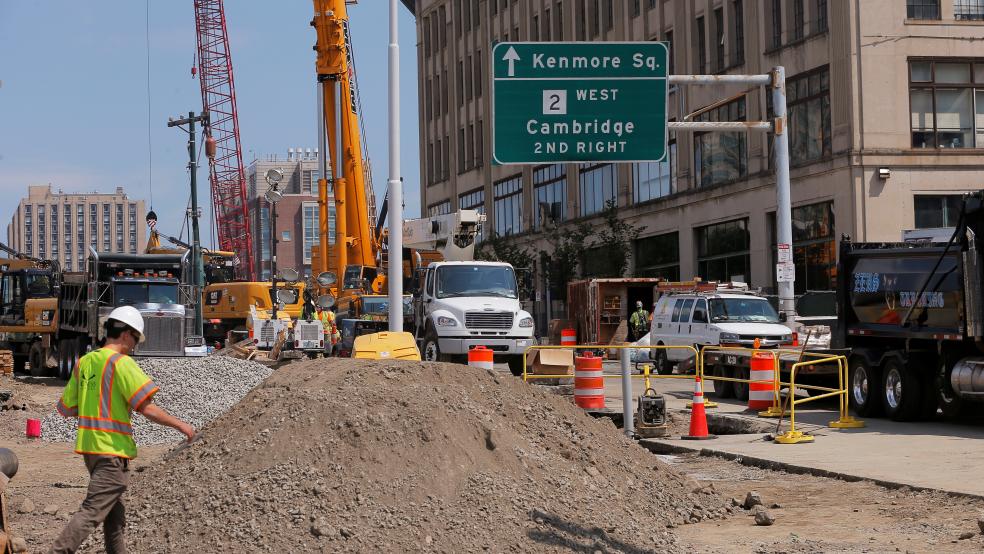After much anticipation, the Trump administration has finally unveiled its infrastructure plan. The plan aims to raise $1.5 trillion for repairing and upgrading America’s infrastructure (including roads, bridges, rail networks, water works, broadband, etc.). It allocates $200 billion of federal government funds to do it, encouraging states, localities and the private sector to raise the rest. This plan uniquely highlights that the burden of funding and R&D does not have to fall solely on the shoulders of the federal taxpayer.
Infrastructure issues disproportionately affect American workers and businesses. In 2014, for example, traffic congestion wasted 6.9 billion hours of commuters’ travel time, detracting from commerce and the larger quality of life. The U.S. supply chain depends on roads, bridges and ports for shipping goods and services around the country. Billions are wasted on inefficiencies due to congestion, bottlenecks and poor system conditions. UPS trucks, for example, experience delays daily due to substandard roadways, congestion and capacity issues. Small delays here and there translate to a whopping $105 million in additional annual costs to this one American company alone.
For an issue that so greatly impacts our economy, American federal, state and local governments have not utilized the private sector for solutions. We need to go much further — even beyond what is explicitly called for by the administration’s new plan.
One key innovation would be for the private sector to partner with federal, state and local governments for project development, funding, execution and maintenance in one package. These public-private partnerships can be built around “design-build-finance-operate-maintain” contracts, in which private corporations are involved in every step. Through public/private partnerships in initiatives such as early investments in technology, American leaders can finally make headway on the seemingly never-ending quest to repair our roads and bridges.
One way to incentivize more efficient private participation in infrastructure planning and implementation is by broadening the eligibility of Private Activity Bonds (PABs). PABs were continued in the recent tax law because of their merit for infrastructure finance. PABs allow privately financed infrastructure projects to benefit from a similar tax-exempt financing as publicly funded infrastructure projects. The extension of PABs in the administration’s program would give such tax exemptions to private organizations putting resources into roads, bridges, tunnels, hydroelectric power generating facilities, rural broadband service facilities and more.
The federal government should further incentivize private activity in the infrastructure space by relaxing requirements for private projects, so they resemble those requirements placed on the public sector. Too often, the private regulatory burden is different — and more stringent — than the public. This creates an unlevel playing field and discourages the private sector from participating in fixing the broken systems that have such a large impact on their daily business.
The objective of these arrangements, we believe, is not so much to increase the total amount of investment — although over the long run that will be necessary. Rather, the point is to use the profit incentive to drive the most cost-effective technology, more durable construction and better maintenance. Governments that follow the same old practices in changing times can miss new opportunities. Private entities that can make more money if they keep a highway in good repair because they have a role in the project from beginning through operations can find construction and maintenance techniques that work better.
These partnerships also should extend beyond just the planning, building and maintenance of roads. Local, state and federal governments can improve the state of American infrastructure by working with private organizations that research and develop improvements in all areas related to transportation. Driverless vehicles (which, some people are not aware, require higher-quality roadways), better construction materials that prolong the lives of roads and bridges, real-time traffic and weather alerts and more should be universal in a modern United States and could have an enormous impact on the serviceability of American infrastructure. With public-private partnerships, these technological advances need not be far off.
If nothing else, members of Congress would be wise to consider lessening their own burden when it comes to repairing our nation’s broken infrastructure. There are abundant opportunities for businesses to engage in the development of the infrastructure that is inextricably linked to their success. The private sector can provide the funds and expertise to bring the United States into the 21st century and to give the nation the roads, bridges, railways and broadband it needs to compete in a globalized world.
Joseph J. Minarik (@JoeMinarik) is senior vice president and director of research at the Committee for Economic Development. He served as chief economist at the White House Office of Management and Budget for eight years under President Clinton. He previously worked with Sen. Bill Bradley (D-N.J.) on his efforts to reform the federal income tax, which culminated in the Tax Reform Act of 1986. He is coauthor of “Sustaining Capitalism: Bipartisan Solutions to Restore Trust & Prosperity.”
Caroline L. Ferguson is a Research Assistant at the Committee for Economic Development. She graduated from Harvard College in 2017.





